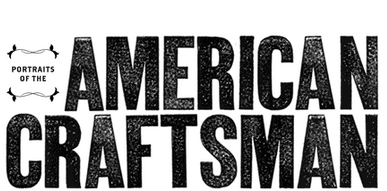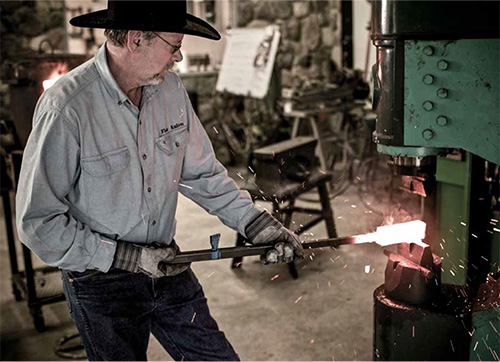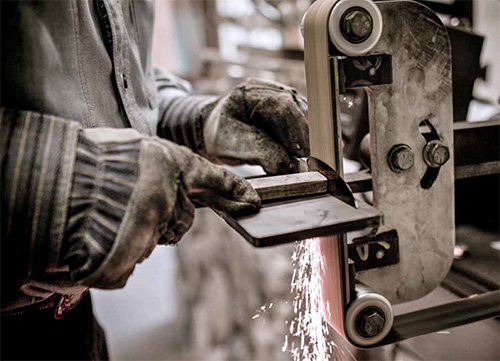Fisk Knives: hybrid, multi-ethnic bladesmithing style.
Jerry Fisk is the first to tell you about his background. He grew up very poor, with no art in his home, and just two books—a Bible and a study Bible. He had no mechanical training whatsoever. His job was to take care of the family’s farm animals. And he finished twenty-first out of twenty-two students in his high school.
“I barely got out of school, and things didn’t look great in terms of a career,” he says.
It was then he learned the value of the books he’d ignored in school. There was an opening for a machinist at the mill where he was shoveling glue, but he was told he’d need to know math. So he purchased some of those textbooks and got the job. Once he merged his newfound forging skills with his lifelong love of knives, a profitable hobby was born.
Largely self-taught, and combining techniques he picked up from knife makers all over the world, Fisk is now considered one of the premier bladesmiths in America, a maker of everything from Bowie knives to swords. Fisk says he never worried about not having the best tools after he became a student of knife history. “I’d go to the museum and see wonderful knives five hundred years old,” he says. “And they didn’t even have the tools I had.”
Fisk’s hybrid, multiethnic style leads to what he calls “unusual approaches” in knife making. Once Fisk has an order—the wait list is considerable—he figures out where the steel and the handle material will come from. He can use store-bought steel, make his own, or take a piece of interior steel the customer suggests: a car’s hood, a metal bucket, pretty much anything.
The steel’s origin and the knife’s design determine the steel-forging process. He might add sugar to the steel while folding it, or he might use a Japanese method of brushing it with rice straw. The handle material also determines how long and in what way he will work the material, whether it’s stag or walrus ivory or something custom.
Fisk forges all his blades one at a time; it’s a painstaking process (and one reason he only makes a few dozen knives a year). He’ll layer the steel as necessary, then shape it to within 95 percent of its finish. That’s when he grinds and files to get a nice flat blade. At that point the blade is hardened, which is important in determining how well it can hold its edge. It’s then put together with the handle—he even uses his own screws.
It’s been tough on him physically. He’s often five feet from a 2,400-degree fire. His shoulders and elbows are worn down, his fingers and joints often inflamed. He gets cold easily. “You gotta really wanna do it,” he says. “It’s not worth the money. I don’t care, though. If I couldn’t sell ’em, I’d still be making them.”






